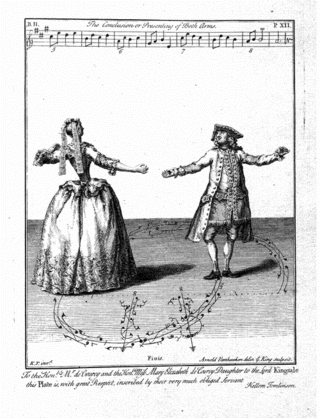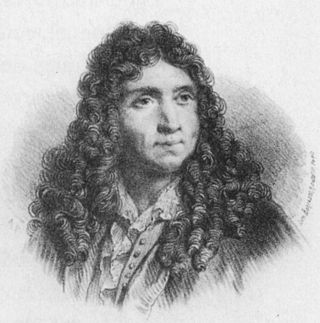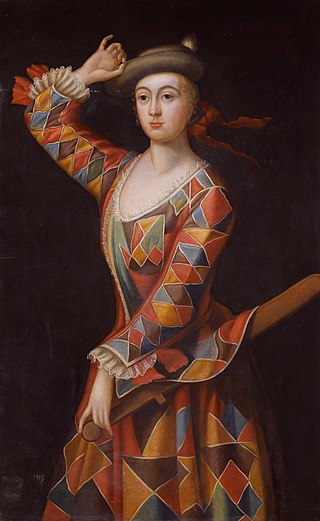
Baroque dance is dance of the Baroque era, closely linked with Baroque music, theatre, and opera.

Jean-Philippe Rameau was a French composer and music theorist. Regarded as one of the most important French composers and music theorists of the 18th century, he replaced Jean-Baptiste Lully as the dominant composer of French opera and is also considered the leading French composer of his time for the harpsichord, alongside François Couperin.
The Pharaoh's Daughter, is a ballet choreographed by Marius Petipa to music by Cesare Pugni. The libretto was a collaboration between Jules-Henri Vernoy de Saint-Georges and Petipa from Théophile Gautier's Le Roman de la momie. It was first presented by the Imperial Ballet at the Imperial Bolshoi Kamenny Theatre, in St. Petersburg, Russia, on 18 January 1862, with the design by A. Roller, G. Wagner (scenery), Kelwer and Stolyakov (costumes).
Lewis Theobald, English textual editor and author, was a landmark figure both in the history of Shakespearean editing and in literary satire. He was vital for the establishment of fair texts for Shakespeare, and he was the first avatar of Dulness in Alexander Pope's The Dunciad.

Beauchamp–Feuillet notation is a system of dance notation used in Baroque dance.

John Weaver is widely regarded as the father of English ballet and of English pantomime.

Pierre Beauchamp or Beauchamps was a French choreographer, dancer and composer, and the probable inventor of Beauchamp–Feuillet notation. His grand-father was called Christophe and his father, a violinist of the king's chamber, was simply called Louis. Following a custom of the time, Pierre Beauchamp was named Pierre after his godfather Pierre Vacherot, tailor of the queen's pages and a relative of the Beauchamps family.
The Loves of Mars and Venus by John Weaver was arguably the first modern ballet, the first dance work to tell a story through dance, gesture and music alone. Its first performance was at London's Drury Lane Theatre on Saturday 2 March 1717.

Pierre Rameau, was the French dancing master to Elisabetta Farnese, and the author of two books that now provide us with valuable information about Baroque dance.
Louis Fuzelier was a French playwright.

Hester Santlow was a British ballerina and actress, who has been called "England's first ballerina". She was influential in many spheres of theatrical life.
John Bennett or Bennet, was an English organist and composer.

Owen Swiny was an Irish theatre impresario and art dealer active in London known for his work in popularising Italian opera in London and his agency in Venice.
Margaret Bicknell was a Scottish theatre actress and dancer.
The chapelle royale was the musical establishment attached to the royal chapel of the French kings. The term may also be applied to the chapel buildings, the Chapelle royale de Versailles.

Thomas Walker (1698–1744) was an English actor and dramatist.
Jane Cibber was a British stage actress.
Anna Marcella Giffard (1707–1777) was an Irish stage actress.
Thomas Griffith (1680-1744) was an Irish stage actor and theatre manager.
P. Siris was an English dancer, dancing master and choreographer. His first name and dates of birth and death are uncertain. He may have been born in France. He was active in London from about 1705 to at least 1735. In 1706 he published a translation of Feuillet’s Choregraphie into English as The Art of Dancing at about the same time as the better known translation by John Weaver.









